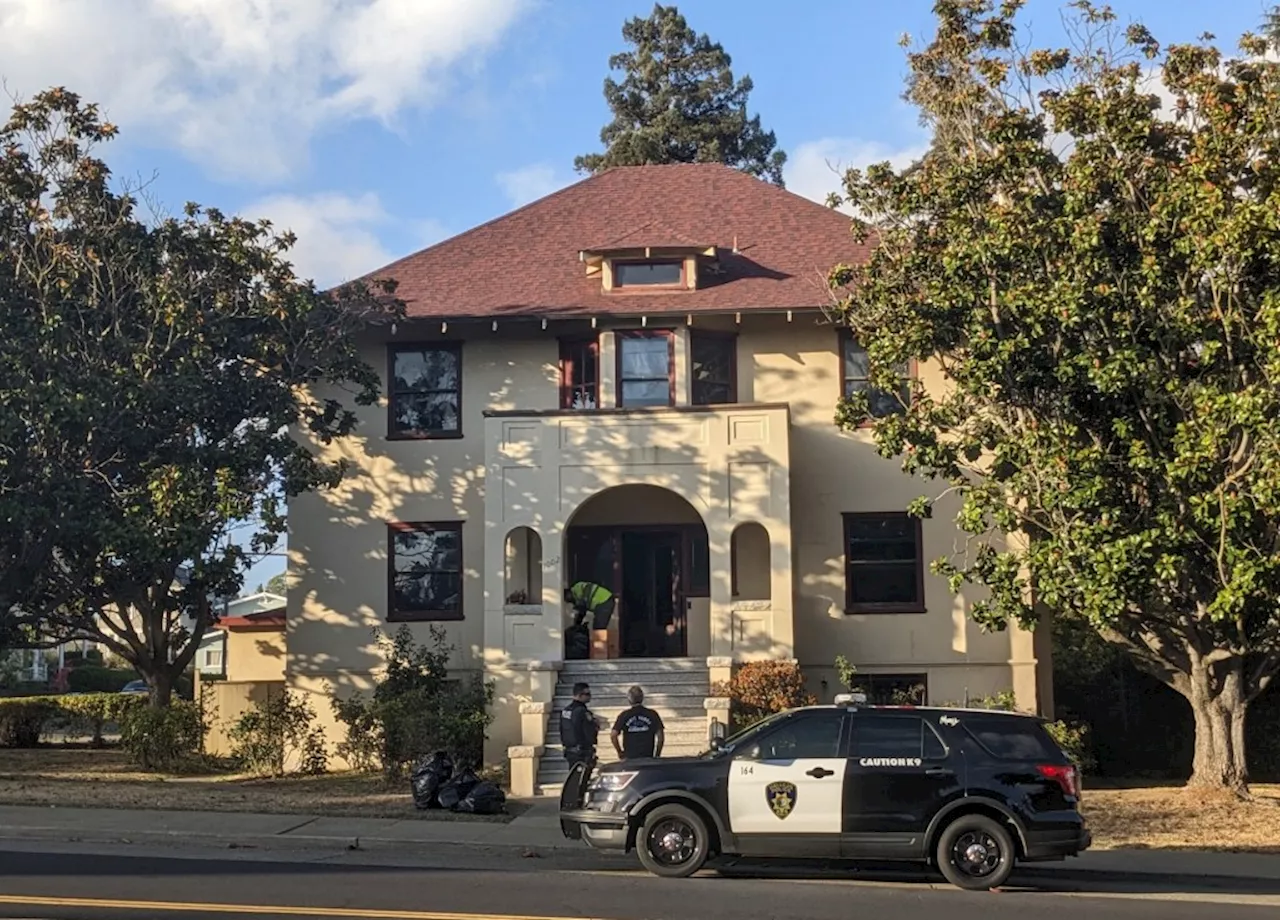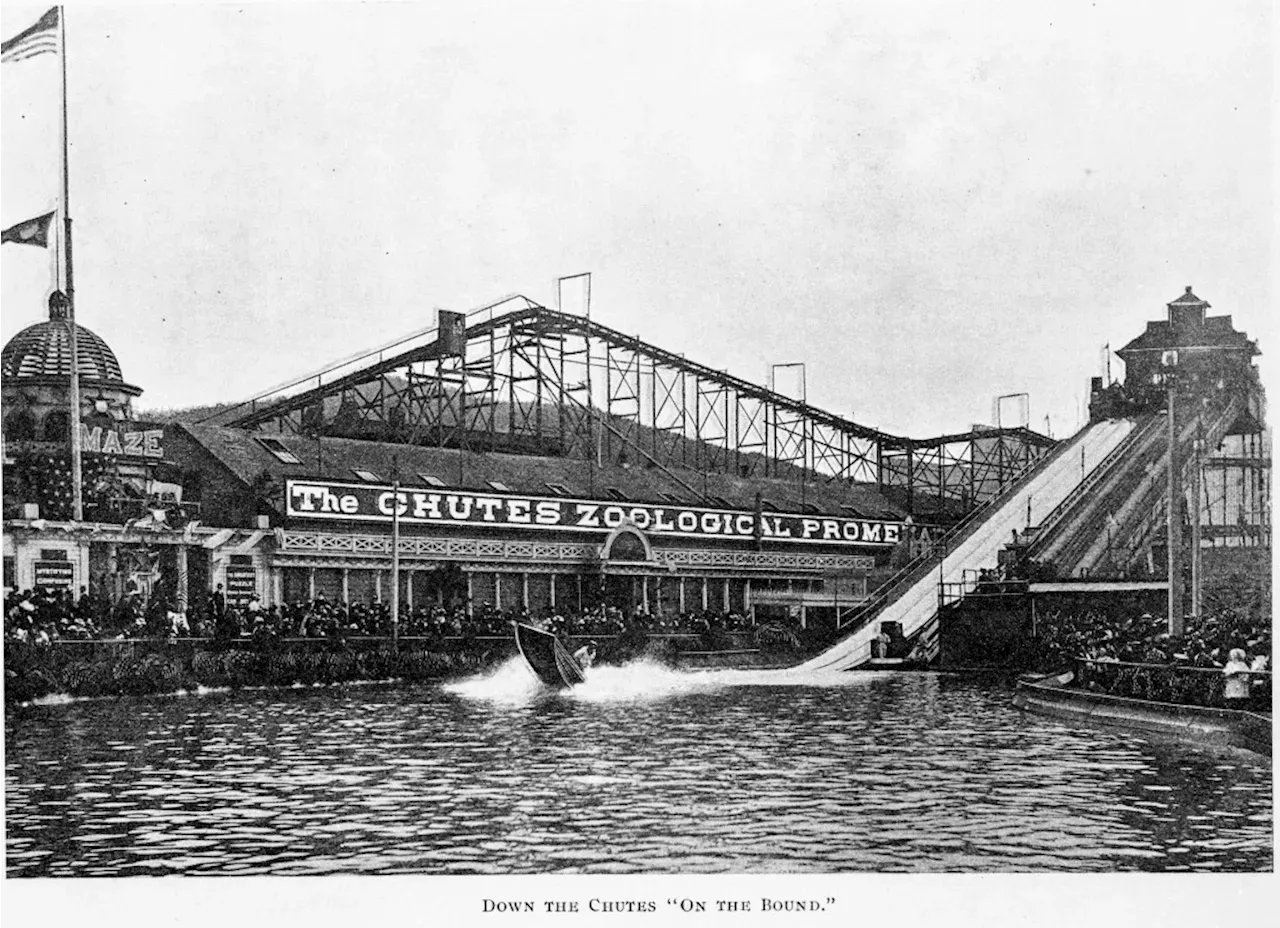The zoological gardens of the day were half-amusement parks, half-vanity projects for the rich and powerful.
Wallace the Lion circa 1905 at the Fulton Street Chutes. Wallace the Lion was on display at both the Haight Street and Fulton Street Chutes. The Zoo at the Fulton Street Chutes was phased out in October 1907. Wallace and the rest of the zoo were sold to a zoo in Vancouver, B.C. Perhaps the earliest zoo in San Francisco – “zoo” in a very loose sense – was the Mountaineer Museum run by John Capen Adams, aka Grizzly Adams.
While it’s not practical to look at the Bay Area’s 19th-century zoos for best practices, it certainly is fascinating. They provided endless entertainment for families who might have never otherwise seen an Asian elephant – in Golden Gate Park, no less. And for the animals, well, their lives were not great, but at least the experience taught our society what not to do.was a sprawling complex in the Mission district run by wealthy hotel proprietor Robert B. Woodward.
There was also a 14-foot alligator, a black-bear “brigade,” leopards, kangaroos and orangutans conditioned to act like a human family – “father” smoked a pipe while “baby” played with a doll. “The hyena proved a major disappointment; the melancholy beast never laughed,” notes James R. Smith in the book, “San Francisco’s Lost Landmarks.” And the “Chutes Museum displayed a sad lot.
“The bison go back to this growing sentiment across the United States that we are just taking out everything. There’s going to be nothing left, so let’s save some of the species by putting them into a captive location,” explains Pollock. The elephants’ lives were indeed hard. They were stationed out in the chilly, gloomy ocean weather where their keepers staved off “la grippe” by giving them quinine and quarts of Kentucky rye whisky. On top of having to give kids saddle-back rides all day, they were pulled into construction duty.
One might not expect this ruthless titan of publishing to be an animal lover. But he had a soft spot for even the smallest of creatures. He forbade the killing of rodents at Hearst Castle in San Simeon, so his staff used live traps., former Hearst Castle historian. “One of the butlers got so tired of releasing the same mouse that he tied a little red string around its foot, so he could bring it to W.R. and say, ‘This isn’t working.’ W.R. just named him and kept him as a pet.
United States Latest News, United States Headlines
Similar News:You can also read news stories similar to this one that we have collected from other news sources.
 Berkeley, a Look Back: Zoning the talk of town in late 1923Nate is an East Bay community papers editor for the East Bay Times and Bay Area News Group.
Berkeley, a Look Back: Zoning the talk of town in late 1923Nate is an East Bay community papers editor for the East Bay Times and Bay Area News Group.
Read more »
 Eye on the Hills: UC Botanical Garden’s fall colors worth the short tripNate is an East Bay community papers editor for the East Bay Times and Bay Area News Group.
Eye on the Hills: UC Botanical Garden’s fall colors worth the short tripNate is an East Bay community papers editor for the East Bay Times and Bay Area News Group.
Read more »
 AUSD Notes: Apply for newly opened seat on Alameda school boardNate is an East Bay community papers editor for the East Bay Times and Bay Area News Group.
AUSD Notes: Apply for newly opened seat on Alameda school boardNate is an East Bay community papers editor for the East Bay Times and Bay Area News Group.
Read more »
 Bay Area homeowner kills suspected intruder, police sayThe alleged burglar broke through the glass front door of a Vallejo home Monday morning. The homeowner shot the suspect in “what appears to be self-defense” and the suspect was pronounced dead at t…
Bay Area homeowner kills suspected intruder, police sayThe alleged burglar broke through the glass front door of a Vallejo home Monday morning. The homeowner shot the suspect in “what appears to be self-defense” and the suspect was pronounced dead at t…
Read more »
 Police: Thieves steal $70,000 of Bay Area business’s wares in a weekVallejo police arrested 3 suspects and had their vehicle towed. They did not recover any of the missing merchandise.
Police: Thieves steal $70,000 of Bay Area business’s wares in a weekVallejo police arrested 3 suspects and had their vehicle towed. They did not recover any of the missing merchandise.
Read more »
 Mississippi Running Out of Ballots in Black-Majority Areas Raises QuestionsBallots reportedly ran out in several precincts across the majority-Black Hinds County.
Mississippi Running Out of Ballots in Black-Majority Areas Raises QuestionsBallots reportedly ran out in several precincts across the majority-Black Hinds County.
Read more »
